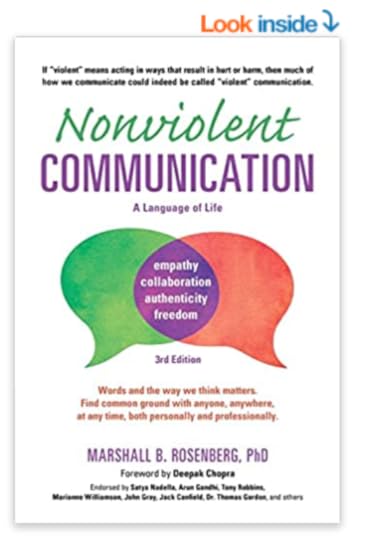Week 15: Nonviolent Communication
Here’s what’s been in my mind recently.
What I’m reading lately?NVC. Nonviolent Communication by Marshall B. Rosenberg. This book can win an award for the worst book cover and typography. But that’s not the point.

At its core, NVC encourages individuals to observe without judgment, identify feelings, connect them to underlying needs, and make requests that are clear.
I now remember what my friend and colleague at Noon, Andy Guest, was telling me around providing feedback in an offsite and how it actually matches 1:1 with NVC. And it’s an absolute eye opener for me since. It’s a gem for any manager or anyone who directly managing people.
The key components of nonviolent communication can be summarized as follows:
Observation: Describe what I observe without adding judgments. The data.Feelings: Expressing my emotions given what I observed.Needs: Connect my feelings with my needs, values, or desires.Requests: Make an actionable request rather than demand. Requests should meet our needs and respect the needs of others.It works in personal relations too. Instead of telling my wife: “You are wrong.” I should say: “Given that I’ve seen you doing X, I feel sad. And that makes doing Y really hard for me.”
I should always remind myself of this. It’s much more peaceful and civilized in any situation.
Something new I’m tryingActually this is not new at all. But it seems that the older I get, the more I like what old people likes. Especially old medeteranians. And especially old Syrians. When I was a kid I hated famous singers of the time like Fairouz and Sabah Fakhri. Now they are my favorites. I rarely like any new kind of music.
Something I revisitedI like the NerdWriter. And I keep coming back to this exact video. It worth anyone’s 6 minutes.
(The thumbnail also matches the title of this blog.)
Why do I like aThis week is: Why do I like walking? 3 reasons:
Simply because I feel alive this way. I’m actually moving from one place to the other.It gives me extended time to think. Think slowly and at my own pace. I won’t be rushed and I won’t be pressured to finish anything. I’m managing around 9.500 steps a day on average. I do most of these steps in 3 days a week.It reminds me of my father. He used to walk after the morning prayers for around 2 hours in the morning (that means between 5AM to 7AM) and another 2 hours just before sunset. He’s actually the person who’s doing what Huberman is suggesting before Huberman was even born.Here’s my average daily steps during the last year. Naturally summer is the best for walking.
 Some software engineering books that keeps popping up lately in my 1:1s with engineers
Some software engineering books that keeps popping up lately in my 1:1s with engineersFor technical expertise, I think the basics are the most important, never a specific tech. So if I want to improve on sth, I sometimes just get back to the basics, to square 1. Don’t go and only read a book on React Native if you want to improve your tech skills. Read the basics that are applicable everywhere.
Here’re some of the books that helped me on the way:
Good for going back to the basics:
Introduction to Algorithms by Thomas H. CormenAlgorithms: A Creative Approach Paperback – 1 Jan. 1989 by Udi ManberDesign and architecture:
Patterns of Enterprise Application Architecture (Addison-Wesley Signature Series (Fowler))Design patterns : elements of reusable object-oriented softwareThere are other famous books I didn’t quite like:
Effective Java by Joshua BlochClean Code by Robert Cecil MartinClean Architecture: A Craftsman’s Guide to Software Structure and Design. by Robert Cecil MartinThere are other books like The Mythical Man-Month and The Pragmatic Progrmmer that I really like. But these are different from the coding/data structure books above.
Do you have favorites? Please share them via email directly to me and I’ll happily add them here and mention you. (my email: mohammadshakergtr@mohammadshaker)



